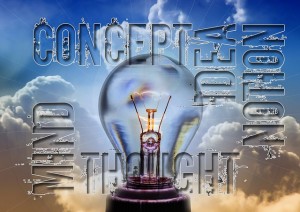What we forget about groups, organizations and communities is that they are human inventions just like moveable type, the steam engine, the automobile, the airplane and the atomic bomb. There is of course a huge difference between inventing a social system like an organization and creating an inanimate object like an automobile. The parts of an automobile do not have cognition. They can’t think. They don’t wonder if they are doing the right thing or doing the thing they have been asked to do correctly. They are not looking to be recognized for doing a good job or looking for a promotion and salary increase.
Humans, however, can and fortunately do think. Their thinking leads to meaning making, values, ethics and emotions. It is the human thinking and feeling that make organizing and all the good things that come from working together possible. At the same time human thinking and feelings make organizing enormously complex. The complex social arrangements created by humans since the beginning of time have led to our current way of life. Those complex social arrangements created by diverse people in different parts of the world lead to very different ways of living and working together. Those different ways should not scare or threaten us. Not all bridges are built the same, but they all have the same purpose.
 Obviously some of our social inventions for working together, resolving conflict, sharing resources and living together have not worked so well. We still settle some of our differences through violence, and there is still racism, prejudice and greed. There are far too many people who live in poverty, lack adequate food, water, education and medical care. However, looking at the facts we can see a decline in all these categories. In the area of hunger we now produce enough food to feed everyone in the world but not everyone has enough food, so we need to invent a new worldwide food distribution system. What we forget is that we invented the current worldwide food system and that the only thing that limits our ability to create something new is our imagination.
Obviously some of our social inventions for working together, resolving conflict, sharing resources and living together have not worked so well. We still settle some of our differences through violence, and there is still racism, prejudice and greed. There are far too many people who live in poverty, lack adequate food, water, education and medical care. However, looking at the facts we can see a decline in all these categories. In the area of hunger we now produce enough food to feed everyone in the world but not everyone has enough food, so we need to invent a new worldwide food distribution system. What we forget is that we invented the current worldwide food system and that the only thing that limits our ability to create something new is our imagination.
Everything that goes on in every group, organization and community is something that humans have invented and the only thing that limits our ability to create something better is our imagination. We forget that we are the inventors, and therefore we can reinvent anything that is not working. The interesting part is that research shows that the best way to reinvent a social process is to start studying what is currently working. That gives us a shared understanding of what is making organizing possible and allows us to imagine new and yet undiscovered organizational possibilities.
(Submitted by Chet Bowling, Associate Professor and Extension Specialist, Community Development)
Note: Chet will be retiring from OSU Extension on April 30. We thank him for his many years of dedicated service to Community Development work and look forward to continuing our working relationship with him in the future.
 In the 23rd Edition of the Survey of Young Americans’ Attitudes Toward Politics and Public Service done by Harvard University, only 30% of those surveyed said they trusted local government to do the right thing all or most of the time. In a society that is increasingly distrustful of government and institutions, now more than ever our leaders need to make positive change through civic engagement. But
In the 23rd Edition of the Survey of Young Americans’ Attitudes Toward Politics and Public Service done by Harvard University, only 30% of those surveyed said they trusted local government to do the right thing all or most of the time. In a society that is increasingly distrustful of government and institutions, now more than ever our leaders need to make positive change through civic engagement. But